If you have never read one of my previous Horse Show Reviews, or if you have never been to a horse show, let me give you a quick rundown of the weekend before getting into my rundown of the Toyota Tundra Limited’s performance.
We take two horses to most shows, so we take the two horses in a bumper-pull 2-horse trailer that weighs right around 5,000lbs with just the horses and the trailer. In addition to the horses, we need saddles and tack for both horses, grooming supplies which are loaded into a 100lb tack trunk, a muck bucket and pitch forks, a hand cart that we use to move haul things around the grounds, chairs and a small folding table, water buckets and the daily supplies for the horses – including grain, hay and bedding.
These horse shows are generally four day events with travel, so we take 50lbs of grain, 4 bales of hay (around 240-250lbs) and six packages of compressed wood shavings which don’t weigh much, but they take up quite bit of space, even when compressed into packages which are roughly 4 feet tall and 2 feet thick. Finally, we have a cooler with drinks and food, along with all of the clothing items needed for my wife to show and for me to clean horses and stalls for a weekend.
We head to the show grounds early in the morning when it is still dark and fairly cold outside, but by the afternoon, the temperatures have risen to a point where the riders need a cool place to relax between classes. Because of that, my test trucks at the horse shows idle pretty much all day long next to the stable, giving the riders in our group somewhere to stay warm in the morning and stay cool in the afternoon.
Basically, we hook up the loaded trailer, fill the bed, fill the cab and pile in for a 2-4 hour drive which usually ends on a rough, muddy road. Once we arrive at the show venue, the trailer is dropped, the truck is emptied out and it is parked – running - for several days before being reloaded and driven back home.
Hauling in the Tundra Limited
The first portion of the horse show weekend began at home, where we loaded up the Toyota Tundra Limited with all of the items which can’t be transported safely in the bed or in the trailer. This includes the bridles, the show halters and the two saddles with all of the pads which go between the horse and the saddle. We buckle the expensive saddles into the outboard rear seats and hang the bridles/halters on the headrests and on the hanger hooks over the rear doors.
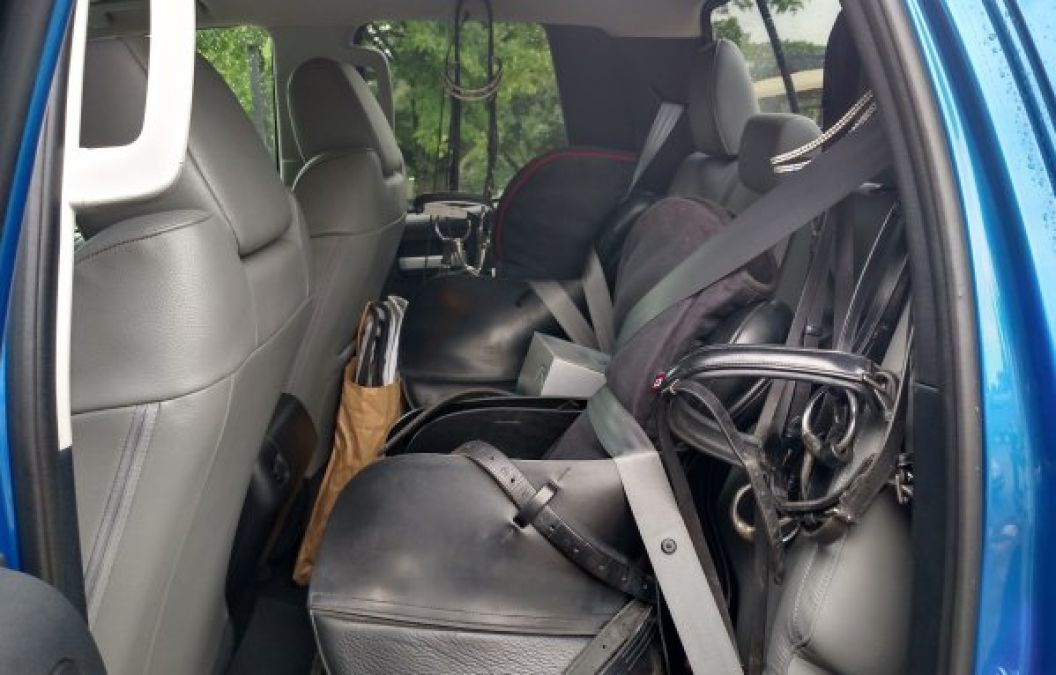
My Tundra test truck was fitted with the smaller Double Cab and in some cases, the smaller rear doors can make loading a saddle into the rear seats problematic. However, the smaller rear doors of the Double Cab Tundra open wide enough to give straight-in access to the rear seating area, so there was no wiggling to get the saddles without banging against the inside of the doors. Also, some trucks – even those in the half ton class – have a tight enough rear seating area that saddles won’t comfortably fit behind the front seats, but the Tundra Double Cab had room to spare with the saddles buckled into place. After the saddles and bridles were loaded, we packed in our clothing for the week around them and thanks to the standard running boards – my wife was able to easily load things into the high-riding pickup.
One advantage of the smaller Double Cab configuration with the Toyota Tundra Limited is a larger bed than the CrewMax cab, measuring 6.5 feet. Thanks to this larger bed, the Tundra Limited had plenty of cargo space for the things that didn’t need to go inside of the truck. This included the bales of hay, the bag of grain, the large packages of bedding, the muck bucket and cart, the hand cart, the chairs and table and my wife’s massive tack trunk. In some cases, trucks with smaller beds don’t have the room for everything, so we have to either take a second vehicle or we have to wedge more items into the small cargo compartment of the trailer. In this case, we had some rain on the first day while packing, so we put as much of the hay as we could in the trailer and we put everything else in the bed.
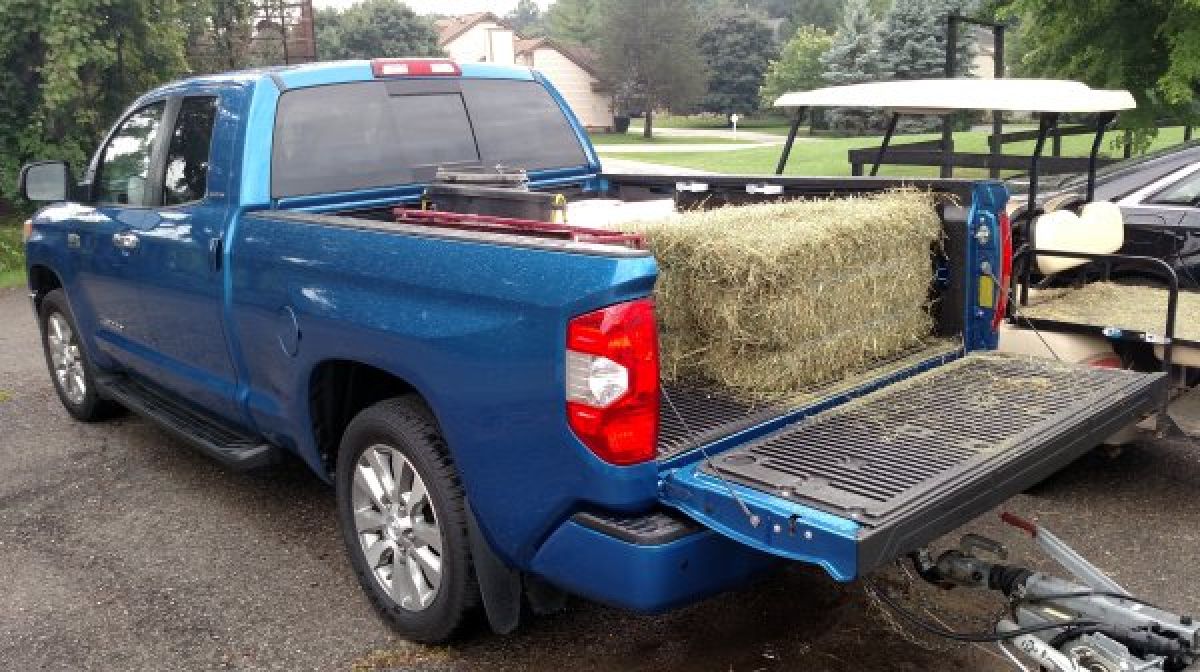
With the Tundra Double Cab, we had extra cargo space even after everything was loaded up, so there was no need to repack things over and over to get it all to fit in one vehicle.
Living in the Tundra Limited
Horse show weekends entail a long, early morning drive to the show grounds, long days at the show grounds and a late night drive to the hotel.
We set out on our trip in the Tundra Limited Double Cab on a cold morning, so the heated leather seats were a welcome (standard) feature and over the course of our two-hour drive, my wife found that the passenger’s seat was comfortable enough to sleep soundly while I handled the driving in the plush, padded driver’s seat. The Tundra Limited is technically mid-line package, but with the standard heated (and power) leather seats and the premium Entune infotainment system, it feels more like a premium package and that premium feel was appreciated on the drive to the event. While I still don’t understand why the Tundra’s infotainment system doesn’t have a dedicated Navigation button, which is my only complaint with the setup, I like the Entune system. Entering an address via the touch screen or the voice control system is simple and the standard sound system provides solid sound quality for your tunes on a long trip.
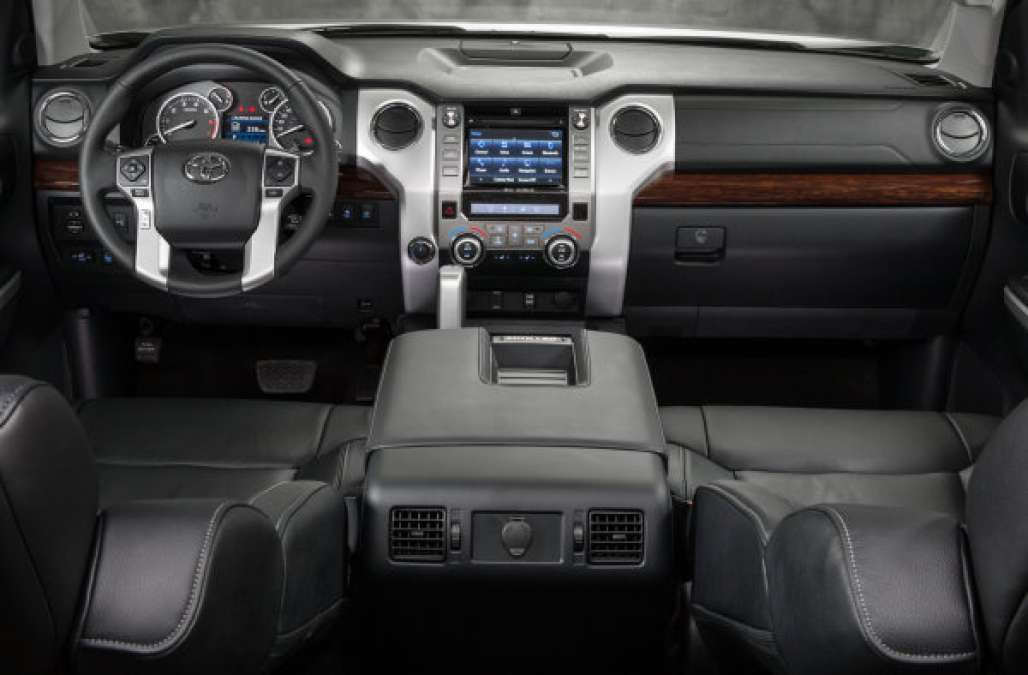
Once we got to the show grounds, we emptied out the cab of the Tundra Limited and it entered its “home on wheels” phase, with the engine running to keep the interior nice and warm – or nice and cool. Early in the morning, I stretched out in the heated passenger seat and napped while waiting for the show to begin, still enjoying the audio system. Later in the day, temperatures climbed and the riders in our group were looking for a cool retreat, so they headed to the Tundra where the air conditioning was kicking full blast. The dual zone climate system allowed them to change the temperatures for each front seat, so as one person was cool enough, the other could continue to take in the chilled air.
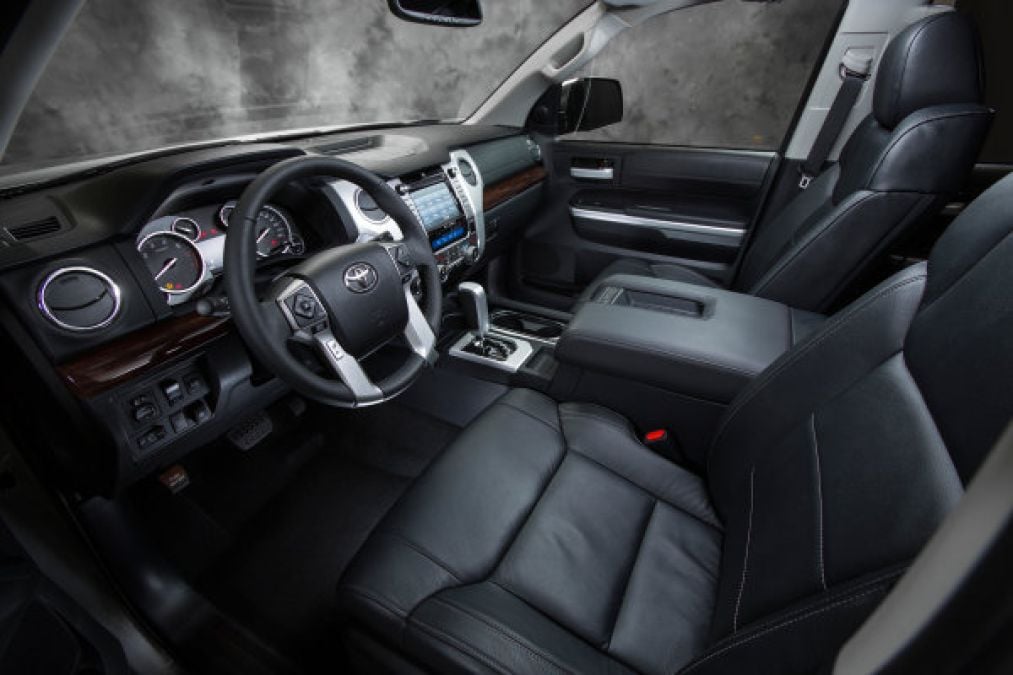
The Tundra sat parked and idling with either the heat or the AC blasting all day during the horse show and at no point, did the temperature gauge rise past the normal position. Some trucks get to running a little hot when left idling like this, but the Tundra’s 5.7L iForce V8 ran nice and cool all weekend long.
Driving the Tundra Limited Under Load
The Toyota Tundra Limited is only available with one engine option – the 5.7L iForce V8. This engine packs 381 horsepower and 401lb-ft of torque, allowing the Tundra Limited 4x4 Double Cab to haul 1,580lbs and tow 9,100lbs. My payload of less than a thousand pounds and my towing load of around 5,000lbs were both well below the limits of this Tundra, but there are very standard loads for folks in the equestrian world. More importantly, this is a standard load which I use for many of my test trucks and this 5,000lb trailer load is what I use for every new truck or SUV, giving me a great basis for comparison from one vehicle to the next.
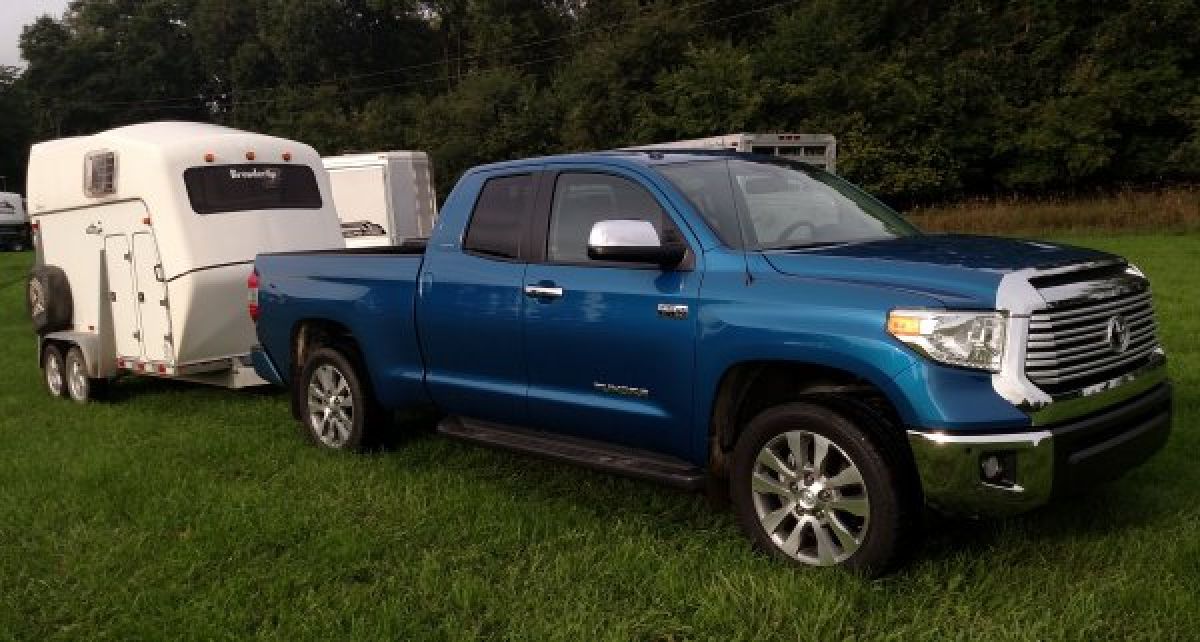
When we loaded up the cabin and bed of the Tundra, I had to make a quick trip to the gas station before hooking up the trailer and on this short trip, I found that the extra weight in the bed had no impact on the driving dynamics of this big Toyota truck. Any decline in acceleration, braking or handling from the extra 1,000lbs was so slight that I didn’t notice and I don’t believe that anyone else would detect a change in any of these parameters with this weight out back.
The next morning, we hooked up the trailer, loaded up the horses and hit the road with the Tundra Limited Double Cab. The iForce V8 is one of the more powerful engines in the current half ton segment, so the Tundra Limited had no problem pulling my ~5,000 pound trailer around town or out on the open road. Low end acceleration is smooth and effortless, and when you need to climb up to highway speeds, the iForce barely breaks a sweat to pull my test trailer. Also, when cruising along the highway with our horses enjoying the ride, there wasn’t much throttle input needed to maintain those speeds, even when we hit hills which required a step-down to a lower gear. At no point did the Tundra Limited feel like it was working hard to pull the horse trailer in any situation on the way to the horse show.
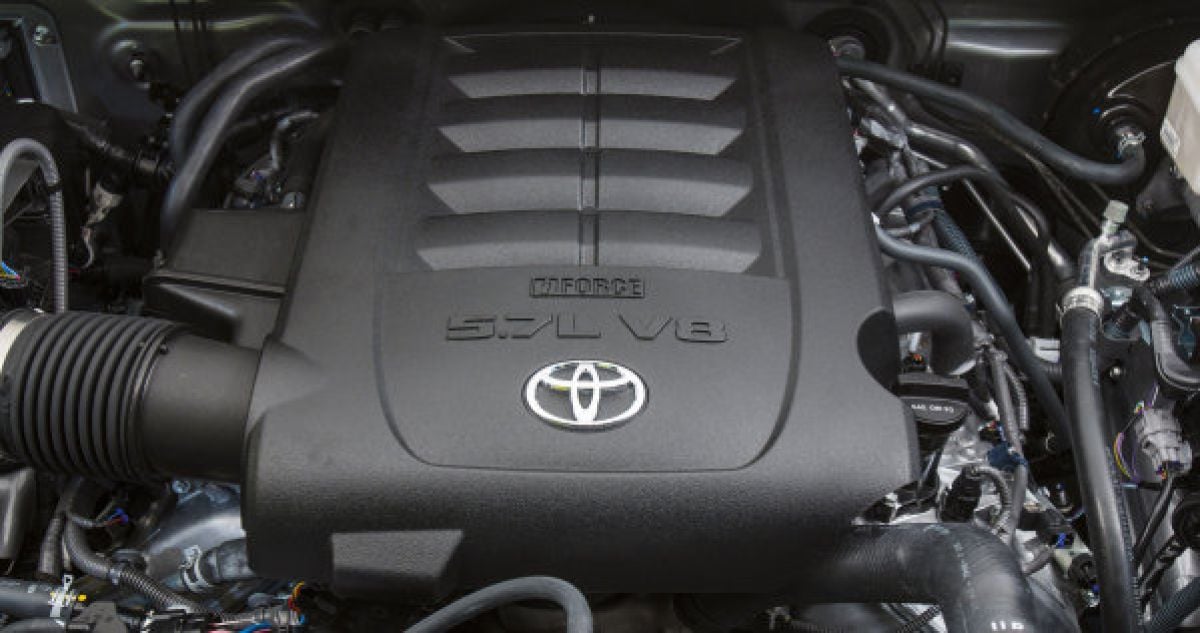
Next, the Tundra Limited comes with a standard integrated trailer brake controller as part of the package, which makes for simple adjustment of the electric trailer brakes and with the aid of the trailer brakes, the Tundra came down from speed in a hurry. I didn’t perform any hard braking exercises for the safety of the horses, but under normal braking, the Tundra didn’t feel like it was being pushed around by the trailer. Also, to get a feel of how the Tundra Double Cab stops with that extra weight out back and no trailer brakes, I dropped the brake box down to 0.0 and made a few normal stops. When stopping just on the truck brakes, the half-ton Toyota handled that extra rear-end force nicely, so for someone who has a 2-horse trailer without electric brakes, the Tundra will stop safely under normal circumstances.
Finally, we come to the ride quality and road handling of my Tundra Limited Double Cab horse show review. In the past, I have been critical of the Tundra’s road handling ability, as the company has focused too much on a smooth ride in the past, but with the newest generation of the Tundra, Toyota has rolled out a suspension setup that better balances working ability and ride quality. Yes, this Tundra is a bit stiffer than the previous generations, but this truck handles rough roads a better than previous versions when not towing or when carrying some payload. Essentially, this Tundra rides more like a proper truck when it is being worked or driven on a rough, country road.
However, I still find that on rough roads with the weight of the horse trailer out back, you do get some mild “bobbing” of the back end of the Tundra. It isn’t dramatic, dangerous or any other concerning level, but compared to some other half-ton trucks, this Tundra doesn’t handle the rough roads under load quite as smoothly. The good news is that I didn’t notice any of this with the Tundra TRD Pro with the Bilstein shocks and for just $45, Tundra Limited owners can upgrade to the Bilstein dampers, but even in standard form, this big Toyota pickup pulls the trailer confidently in most situations. Basically, on the roughest paved roads or some chewed up dirt roads, the back end does bob a bit at speed, but it is really more of an annoyance than a concern.
That being said, the Tundra Limited handled nicely on the highway and in the tighter turns around town. Trailer sway was never an issue and my combo felt stable on the turns, all while presenting a smooth, quiet ride.
The Final Word
At the end of the weekend, the Toyota Tundra Limited Double Cab passed the horse show test with flying colors. The interior is comfortable and roomy, the larger bed has lots of room for cargo that you don’t want to keep inside and the Tundra handled the working load (payload and towing load) like a champ.
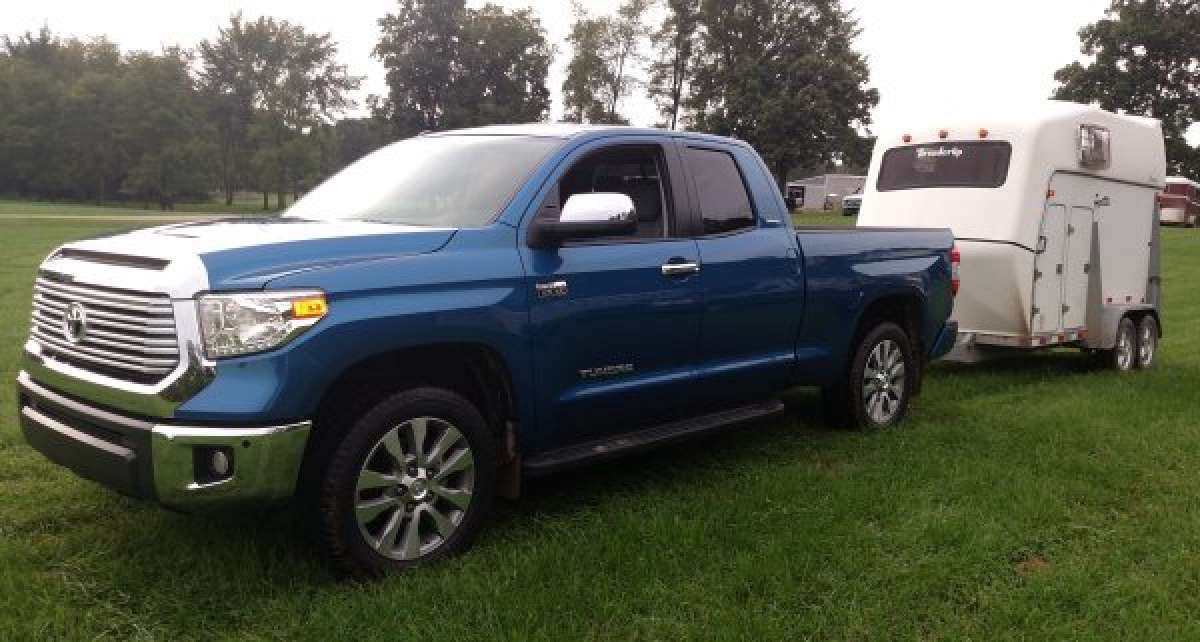
I would absolutely give the thumbs up to anyone considering the Tundra Limited for a regular towing vehicle of a 2-horse trailer and my only advice would be to pay the slight upcharge for the Bilstein dampers – which would effectively eliminate my only complaint with the half-ton Toyota while driving to and from the grounds. Even with the standard suspension, the Tundra Limited performs well in most situations and in regulating your speed on rough roads, the rear end bobbing can be eliminated as well.
In the past, Toyota was criticized for their trucks not being “hard working enough”, but after putting this Tundra through the paces of a horse show weekend, I can confidently say that this is a truck that can handle the equestrian lifestyle with the best of the half ton segment.












